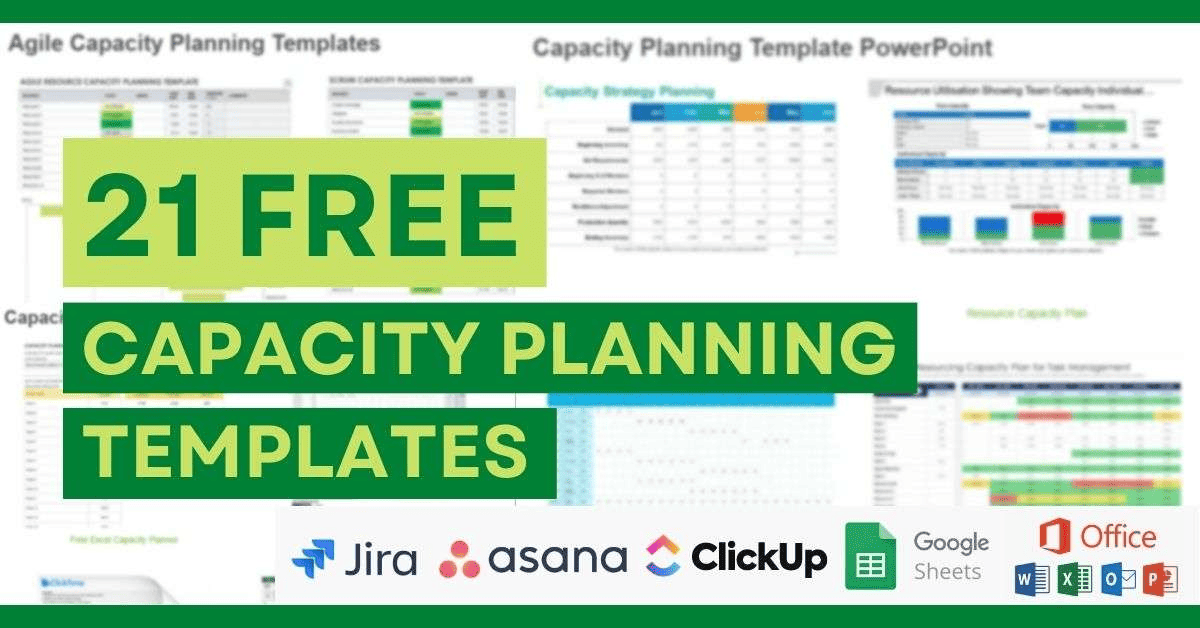
Capacity planning refers to the process of assessing your project’s prospective needs. The goal of planning for capacity is to guarantee that the right resources are there when needed. The word “resources” could mean people with the right skills, enough time, or money needed. As the name suggests, the process can be divided into capacity and planning.
First, you’ll need to determine your team’s total capacity, which is the highest amount of work they can handle before they become overwhelmed.
Secondly, you may proceed to the planning phase after you have the capacity information. This is where you prioritize jobs and plan hours to complete work by the designated deadline.
How to Capacity Plan
The capacity planning process may vary from one organization to the next, but a few basic steps will always happen.
1. Forecasting anticipated demands: If you know an upcoming project, estimate how much work it will require. This estimate will help you determine how much capacity you need to finish the project and allow you to compare it to your current capacity (as shown in the following template).
2. Determine the necessary capacity: Determine the capacity you’ll need to complete the task you planned in the previous step based on your initial assumptions, as shown in the following template.
3. Determine the current team’s resource capacity: Ensure your staff can manage the workload before adding additional projects to avoid burnout. If a person can work an average of 30 hours per week and is currently engaged in projects, you can determine how many hours they can work by deducting their current workload from the average.
4. Measure the capacity gap: Measure how your current resources stack up against the expected demand based on how much capacity a project needs.
5. Synchronize capacity and demand: Look at the capacity gap already found and figure out how to best use the current and available capacity to bring things back into balance. If your team is at capacity and unable to do additional work, you will need to find more people as soon as possible to help complete the project. You might want to add another project to maximize your resources if you have extra capacity.
Capacity Planning Template PowerPoint
4 Reasons Why Capacity Planning is important
Capacity planning benefits everyone involved, including the project manager, the team, and the business. Here is a list of some benefits.
- Stakeholder Satisfaction. Keep your stakeholders happy and ensure you don’t miss out on potential business by accurately predicting demand and adjusting your real-time delivery to match it.
- Prevent Scope Creep. A well-considered strategy for your team’s capacity can help prevent scope creep and alleviate some pressure. Whether you have an abundance of capacity or a shortage of resources, you can always meet demand as long as you know what steps to take in each situation.
- Available for New Projects. When you do good capacity planning, your team’s skills and availability for new projects are in sync. If there aren’t enough resources to finish a project, you’ll know you need to expand your team’s resources.
- Estimate Future Capacity. Capacity planning is not only beneficial for present projects but also for estimating future capacity requirements. You may use a capacity plan created for one project as a starting point for other projects that share its specifications. It increases transparency and cuts down on production costs.
Capacity Planning Template Excel
3 Simple Capacity Planning Strategies
There are three different ways to plan capacity that can be used in various situations to get the most out of production capacity.
- Lead capacity planning: This strategy, also known as “lead strategy,” involves increasing the number of staff recruited to meet rising demand. For instance, if you have a retail business, you may need to recruit many seasonal employees over the holidays, either for the entire season or for a single holiday sale. If you anticipate having more clients, you can efficiently staff your team and add extra members immediately.
- Lag strategy planning: This strategy involves increasing resource capacity to meet immediate demand. For example, lag strategy planning is frequently used when someone is “on call” in the medical care, community service, and food industries. There should be enough resources, or team members, to meet the needs of all customers or clients, so you may need to call in backup depending on how busy your team is.
- Match strategy planning: This strategy uses lag and lead strategy planning as part of a hybrid approach. It requires gradual capacity expansion to achieve the desired level of resource utilization. For instance, if you are a floor manager in the restaurant industry and have several employees on call for the night, and a large number of customers arrive unexpectedly, you must call on multiple servers to serve them until the crowd disperses.
Agile Capacity Planning Templates
Capacity Planning Template Word
8 Best Practices in Capacity Planning
Here are some tips and best practices for planning your capacity that will help you manage your teams and resources.
- Communicate openly with your team. It would be best if you had an open discussion with your team members about their workloads and any potential side projects since no one knows better than they do how much capacity your team has available.
- Create a Cross-Functional Team. It would be best to have a team with different levels and roles that can work together and a team that talks about production capacity and resource management.
- Identify the Resources Needed. Consider the size of each project and the resources needed to finish it.
- Calculate Resource Capacity. Before you can plan your production capacity, you need to know your current capacity and resources.
- Learn from previous projects. Host a review to examine how things went, paying close attention to areas where the capacity was exceeded.
- Prioritize Projects. Which tasks should be prioritized over others, and which may wait for now? Nothing can be accomplished all at once.
- Determine Resource Allocation Based on Project Priority. Assign the projects with the highest priority, ensuring they align with the organization’s objectives.
- List the known risks. Look for uncertainties like lousy weather, union strikes, and new government rules that could abruptly stop or start new projects.
Capacity planning vs Resource planning
The main difference between capacity planning and resource planning is that in capacity planning, you aim to find a balance between how many resources you will need in the future and how many you can provide. Consequently, it assists in addressing broad questions like
- When can we start these projects, and what should we work on?
- Do we require more personnel?
- Do we currently have the right combination of skills?
While resource planning was primarily concerned with short-term planning, which is used to determine which resources should be assigned to which projects,
| Capacity planning | Resource Planning |
|---|---|
| What task can we tackle? | What projects are our resources engaged in? |
| Longer range views | Medium range views |
| Demand vs. supply variance. | Reporting on under- and overutilization. |
| Skills/team level focus | Resource Focus |
Capacity Planning Online Tools
Jira Capacity Planning Tool
Jira is a beneficial tool for efficiently managing the workload of a team in software development. Jira is great for visualizing work and setting up teams. You can extend Jira’s functionality with a tool like the one below:
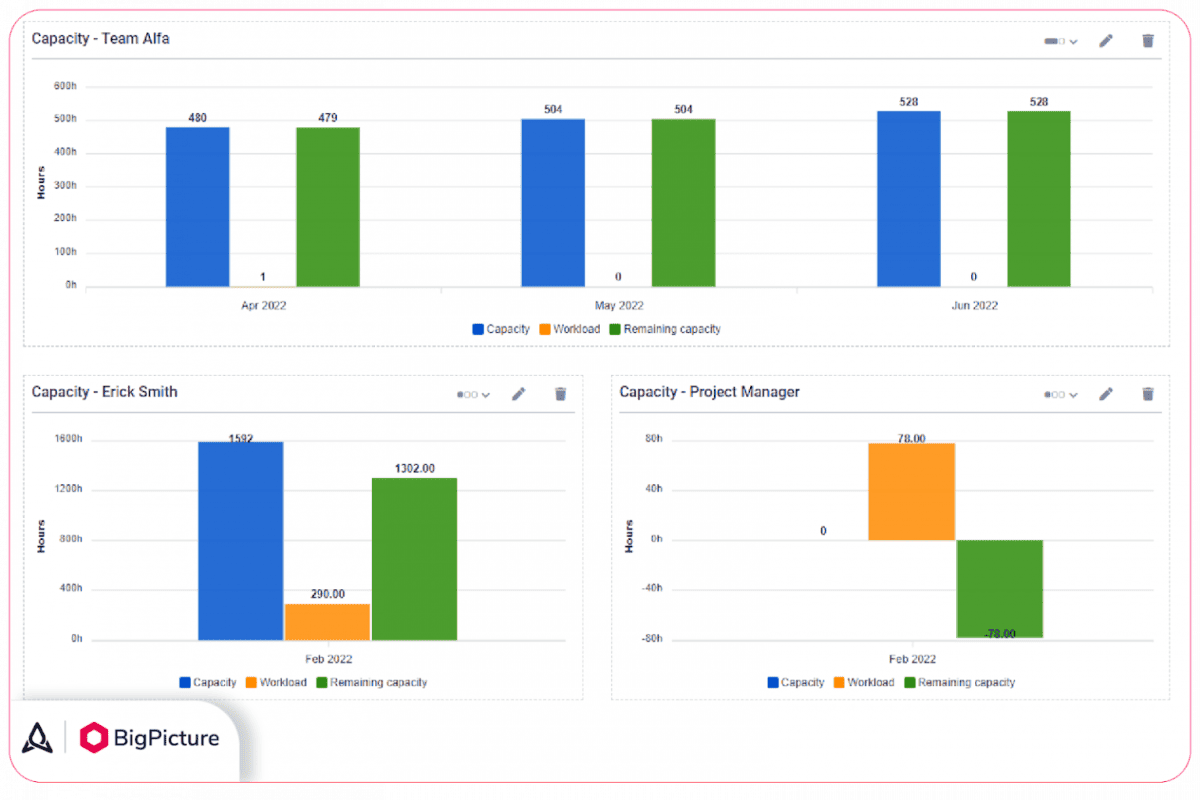
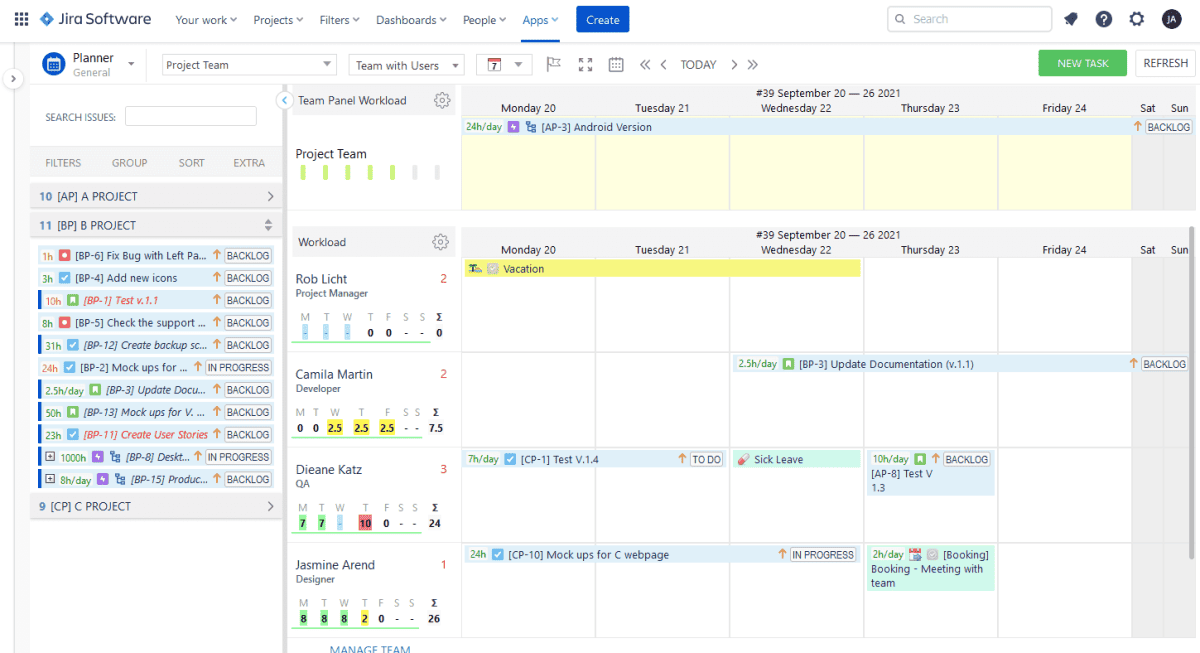
Click Up
ClickUp is a cloud-based tool for managing projects. It achieves a good balance between offering an enormous number of features and keeping them cheap and easy to use.
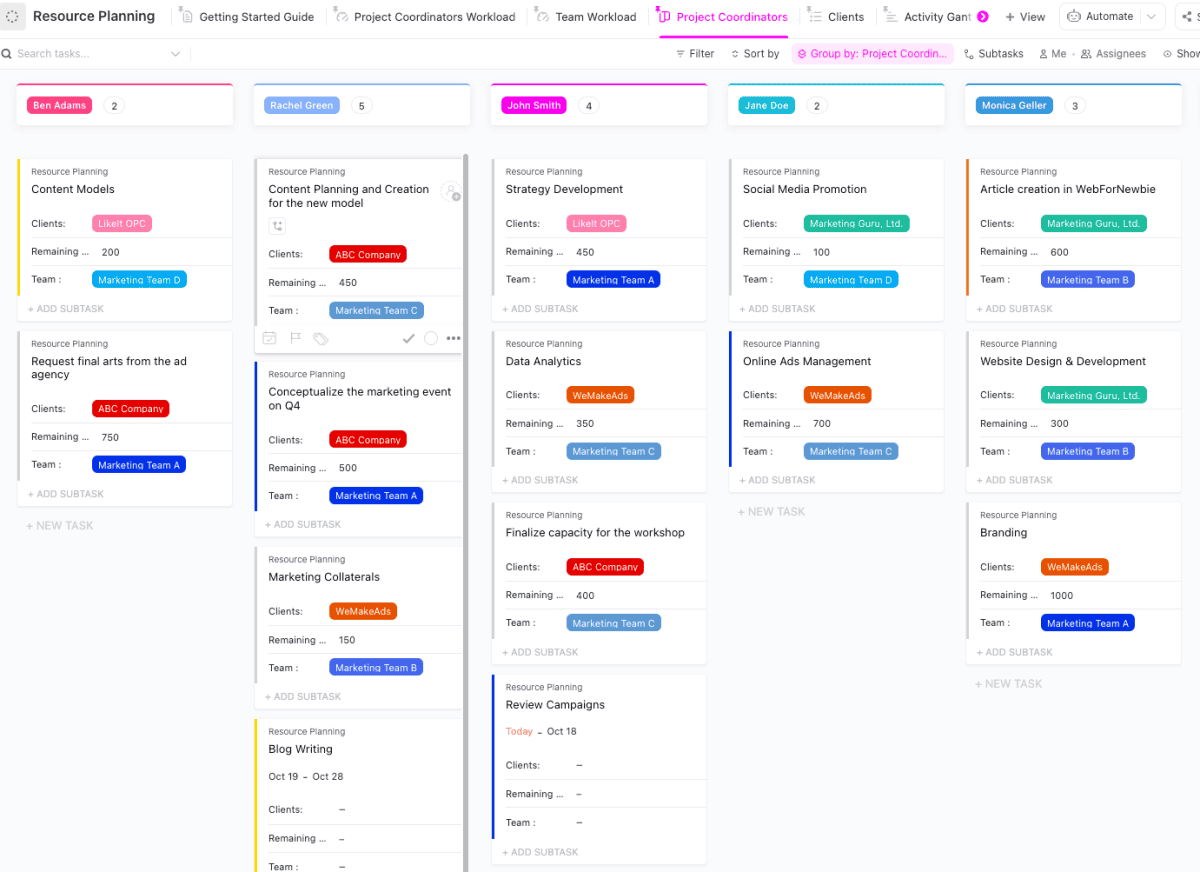
Pros
- It has an excellent set of features.
- Adaptable to the needs of individual managers
- Produce reports, delegate tasks, establish due dates, and interact with the team.
Cons
- Better native time tracking capabilities are possible.
- A challenging learning curve
Asana
Asana is a cloud-based task management service that helps organizations organize, communicate, collaborate, and manage their tasks and projects. It is made to handle multiple projects and can be used by businesses of all sizes simultaneously.
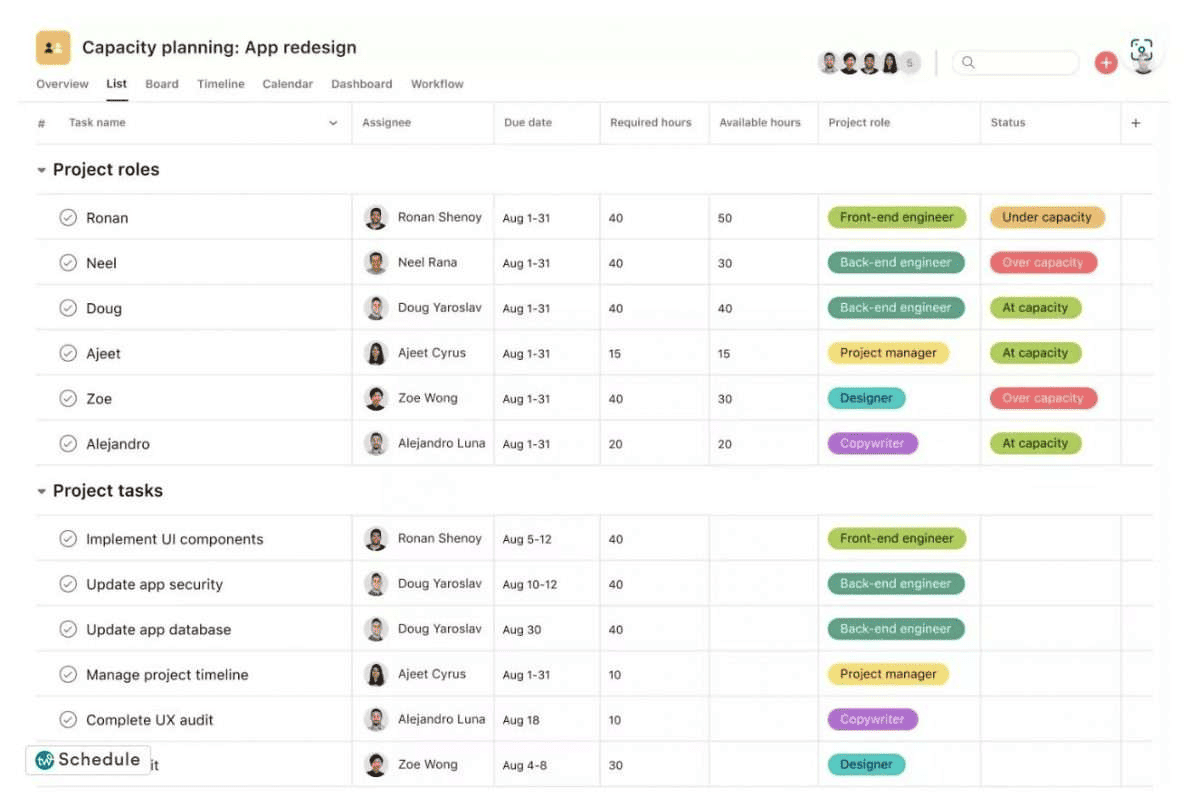
Pros
- Offers a free plan.
- Integration with other applications
- A wide range of customization features
Cons
- Confusing email notifications.
- Slow loading
- Complex project view
Toggl
Toggl is a time-tracking application that enables monitoring of an employee’s everyday activities. It gives a lot of information and helps streamline work by pointing out places where things could be better.
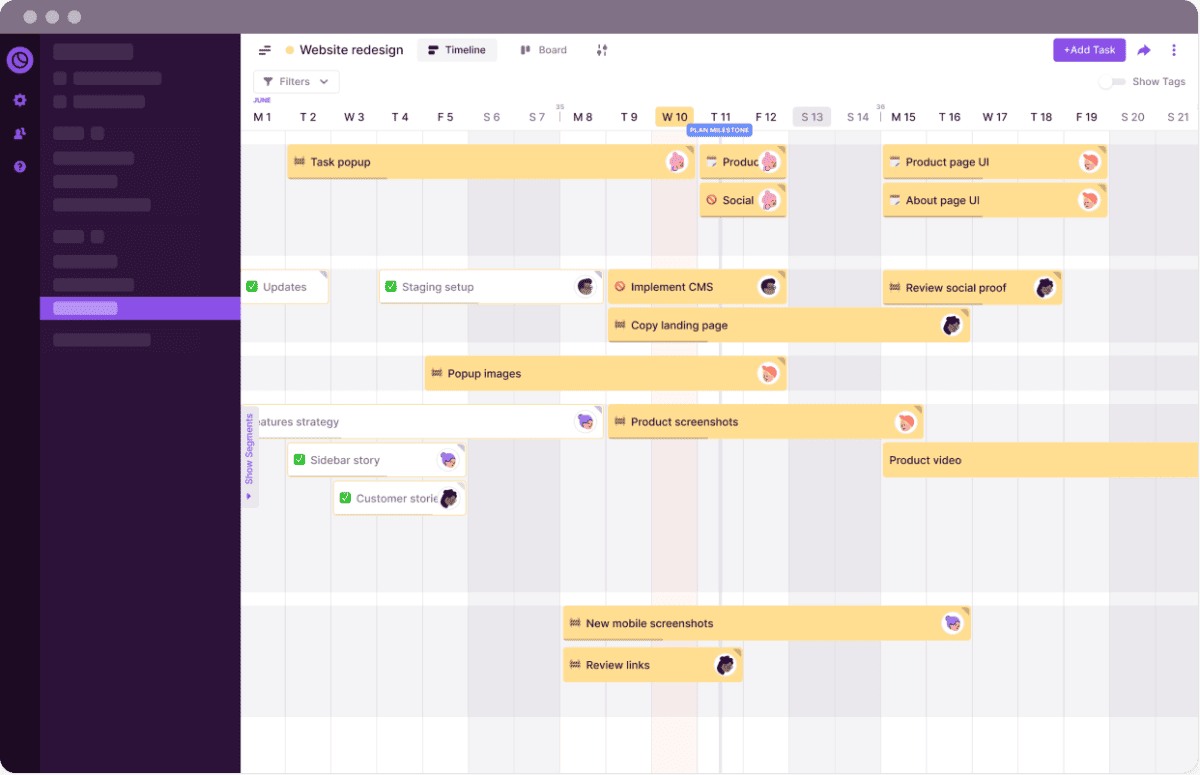
Pros
- Reminders, Calendar view
- Supports all platforms
- Multiple features (including reports and a Pomodoro timer)
Cons
- A limited number of tags
- The buttons are not very user-friendly.
- Expensive
Capacity Planning FAQs
What is the purpose of capacity planning?
The goal of planning for capacity is to make sure that your operations strategy can always meet demand. By using this type of strategy in your process, you will be able to meet deadlines, improve your bottom line, and grow your business in a smart way.
What are the three types of capacity planning?
Capacity planning, in and of itself, can be divided into three subcategories: product, tools, and workforce. Together, they ensure that you have enough time, money, and energy to meet your current and future needs.
How could you use a spreadsheet for capacity planning?
Using the goal-seek function in Excel, a spreadsheet can be used to plan capacity by figuring out how much more capacity would need to be added to reach the goal.
What is the purpose of capacity planning?
Capacity planning aims to find the right balance between the available resources and the project’s needs. It aids in meeting deadlines and effectively scaling businesses.
Shane Drumm, holding certifications in PMP®, PMI-ACP®, CSM, and LPM, is the author behind numerous articles featured here. Hailing from County Cork, Ireland, his expertise lies in implementing Agile methodologies with geographically dispersed teams for software development projects. In his leisure, he dedicates time to web development and Ironman triathlon training. Find out more about Shane on shanedrumm.com and please reach out and connect with Shane on LinkedIn.
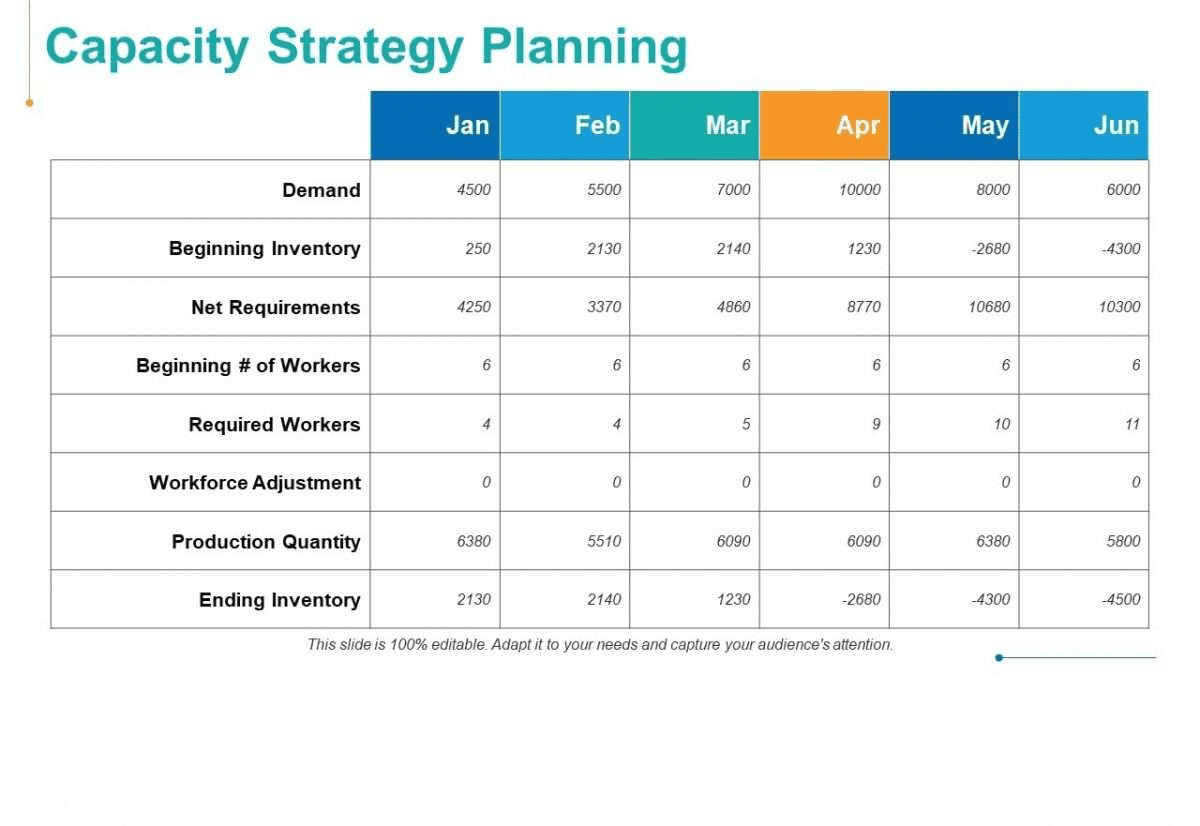
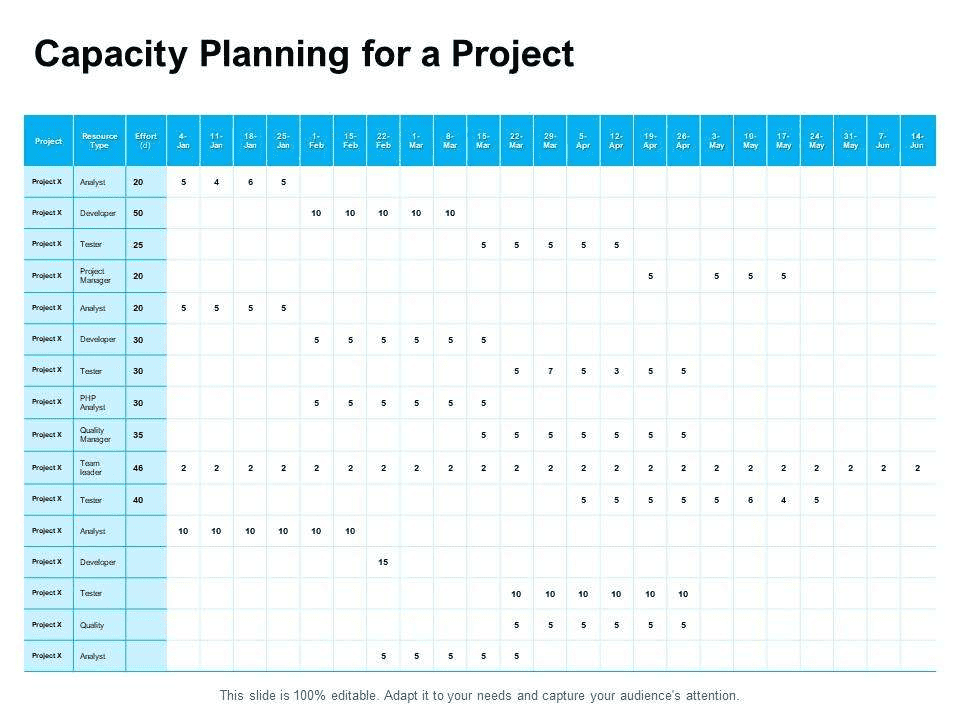
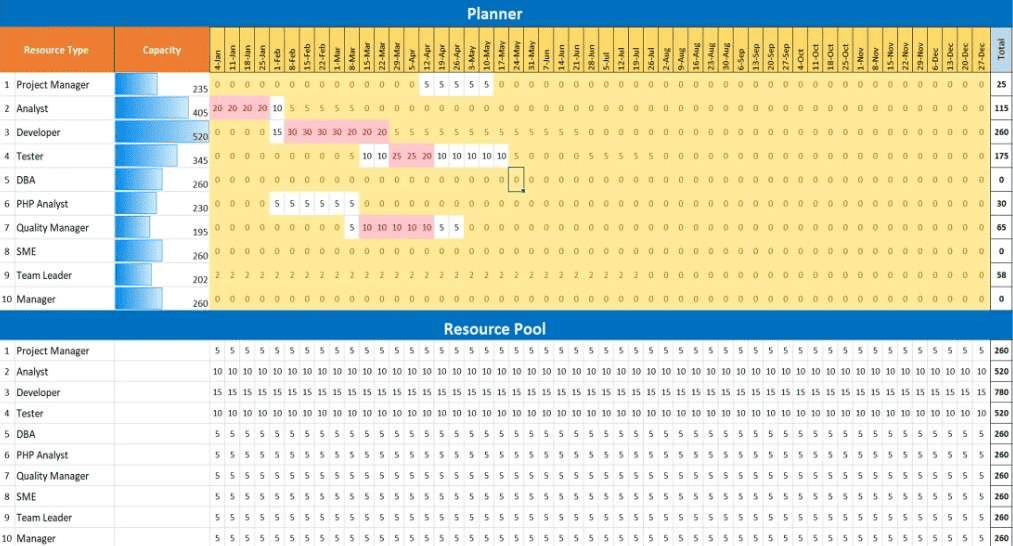
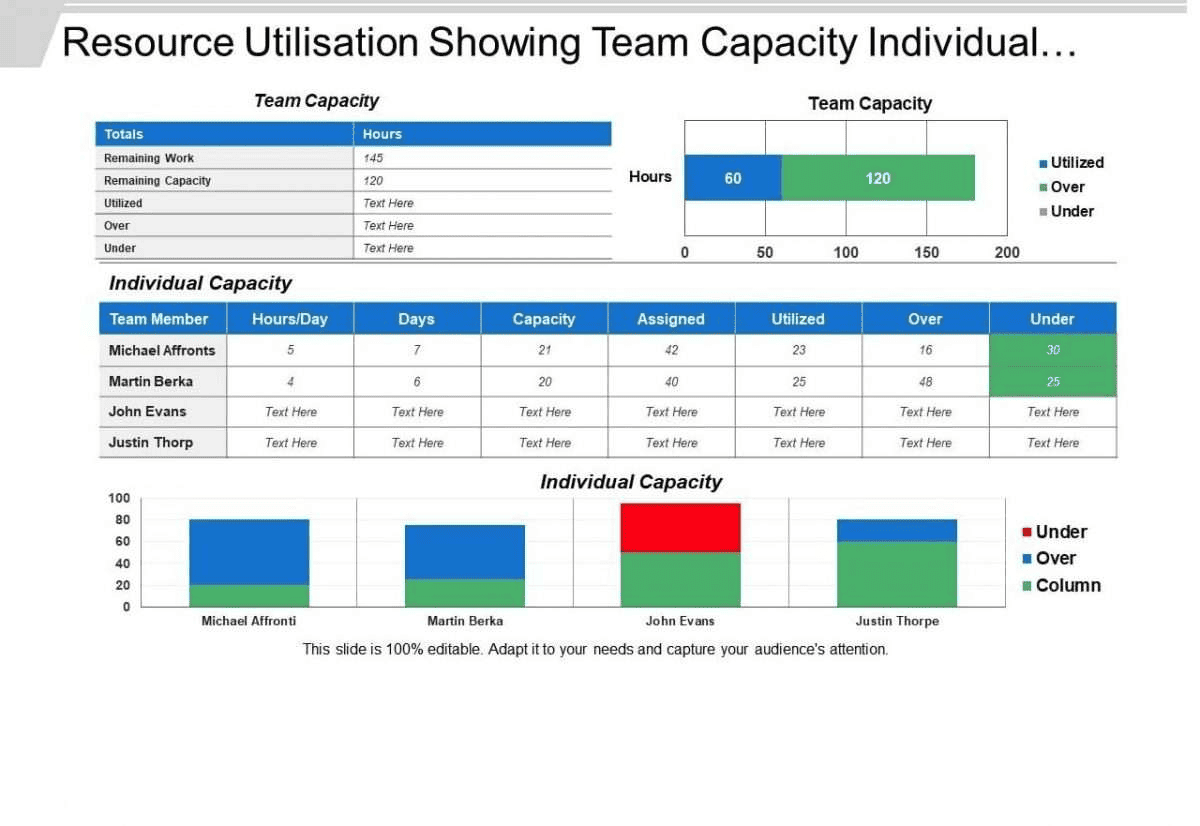
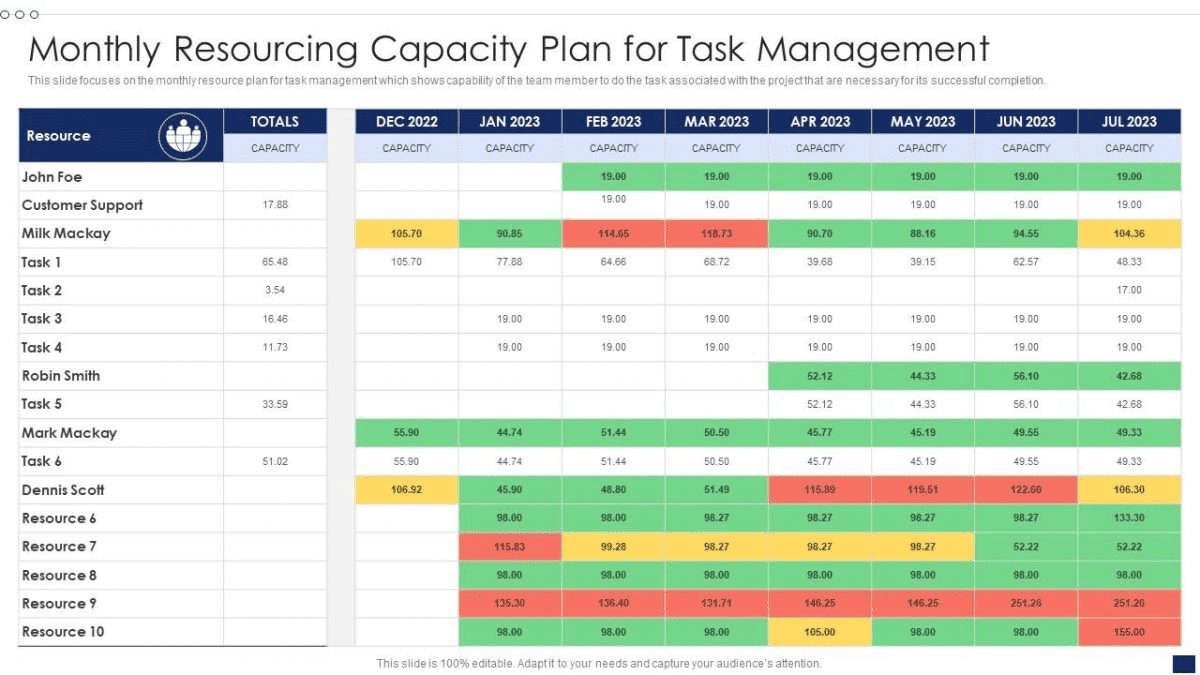
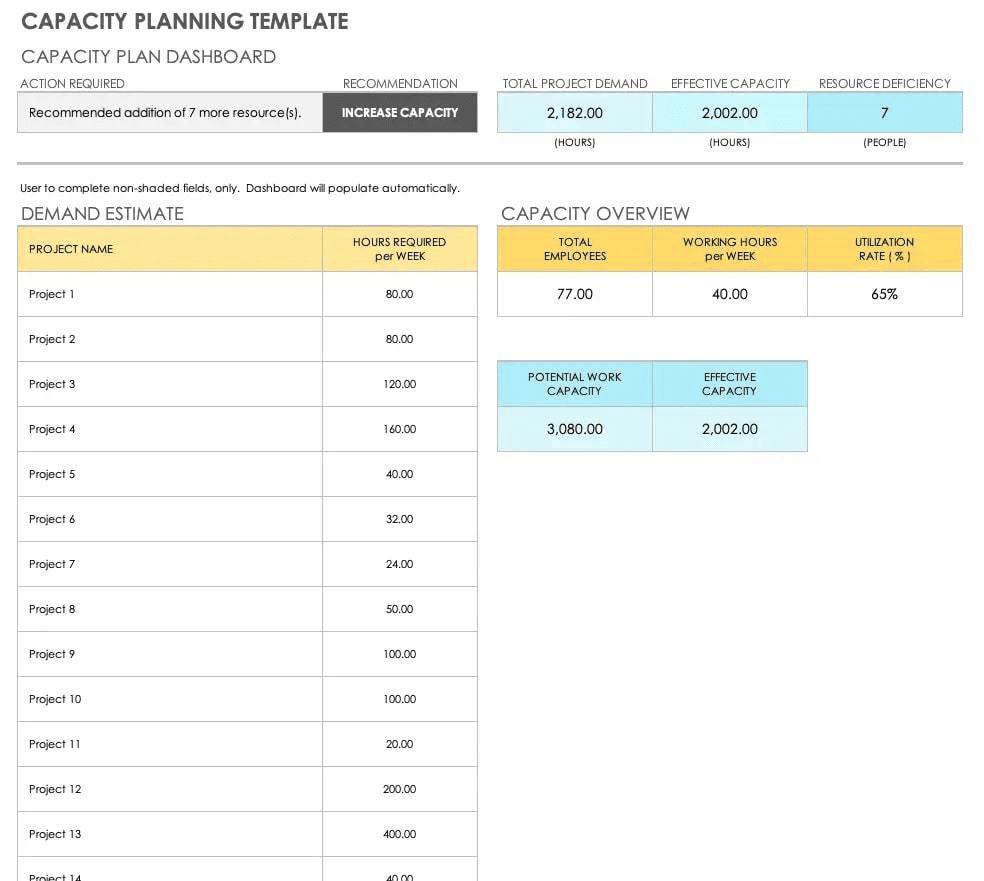
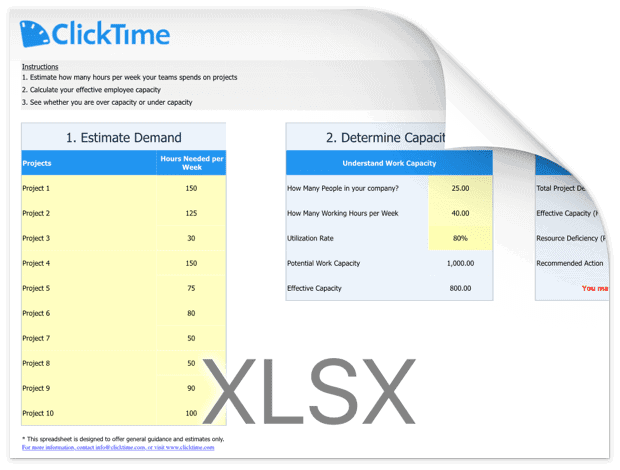
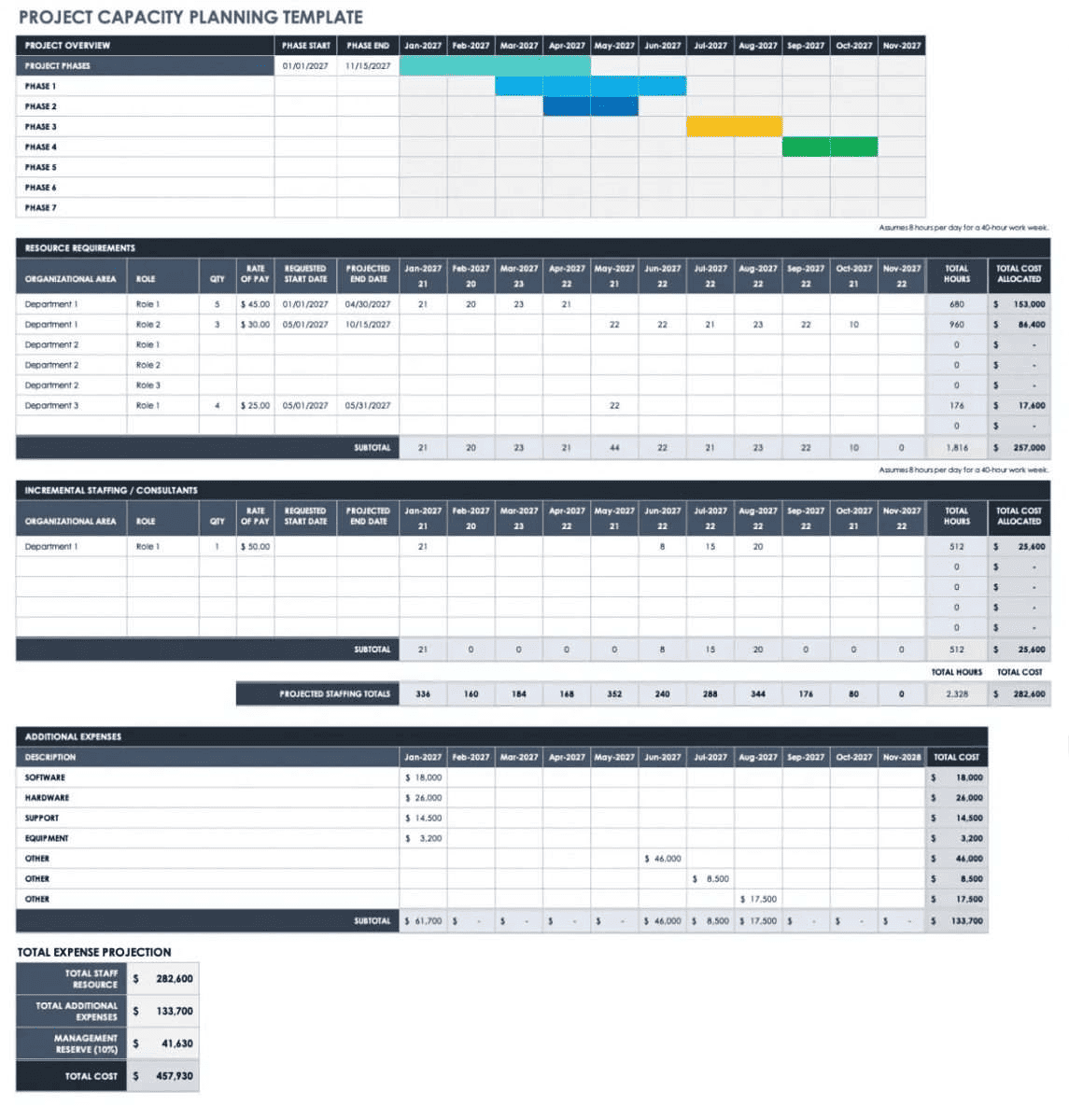
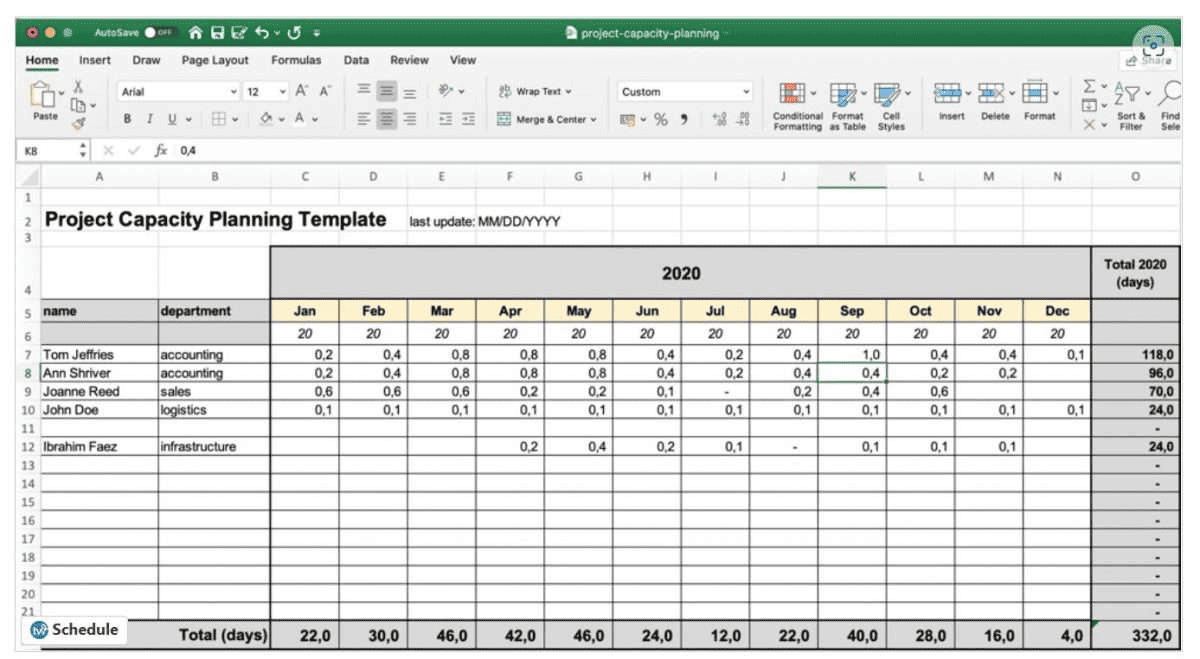
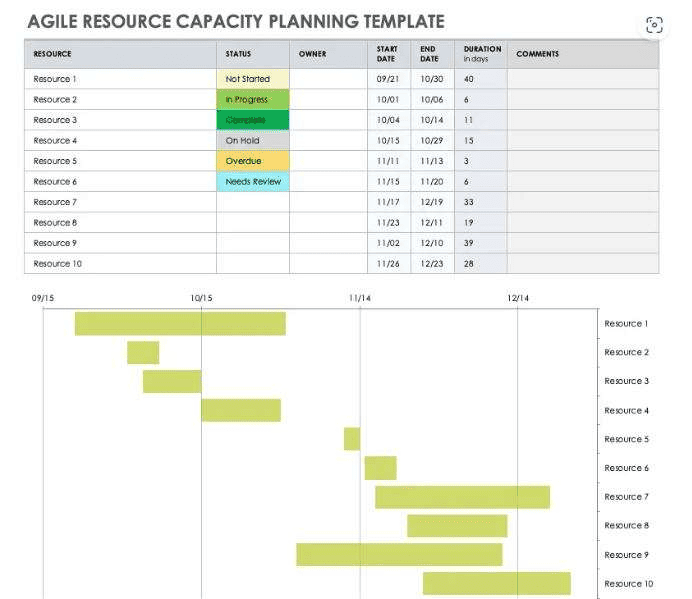
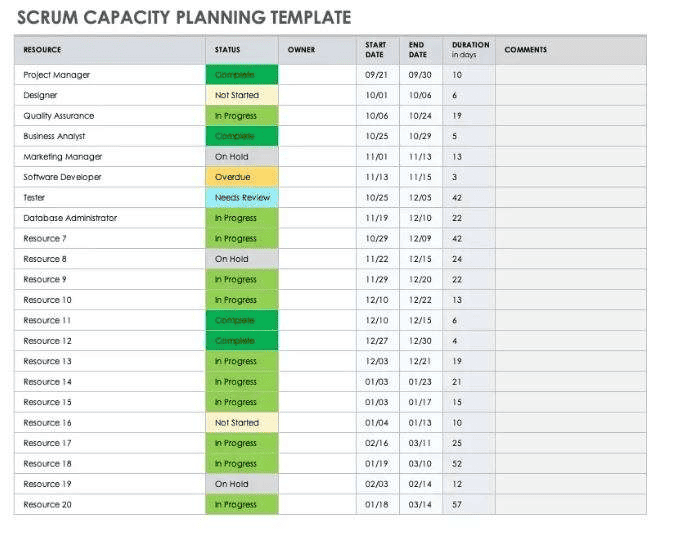
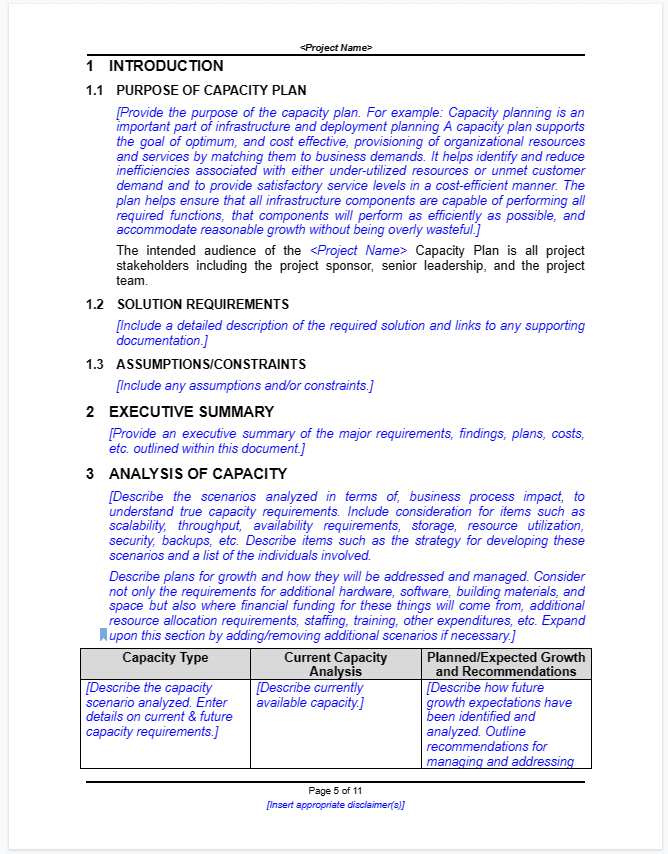
This post is a fantastic resource! The variety of templates provided makes it so much easier to tackle capacity planning. I love how user-friendly they are in both Word and Google Docs. Thank you for sharing these helpful tools!
These templates are a game-changer! I love how versatile they are for different project needs. Can’t wait to try them out for my team’s capacity planning. Thanks for sharing!
Thank you for sharing these templates! They are incredibly helpful for streamlining our capacity planning process. I appreciate the variety offered for both Word and Google Docs. Looking forward to implementing them in our projects!